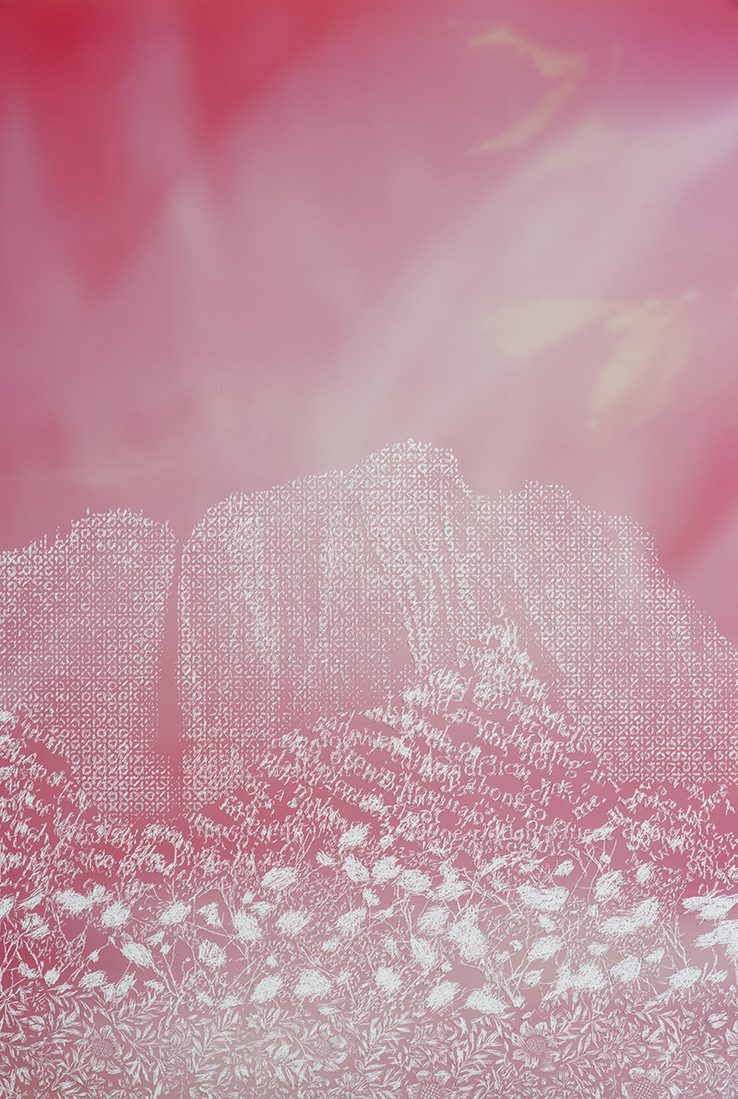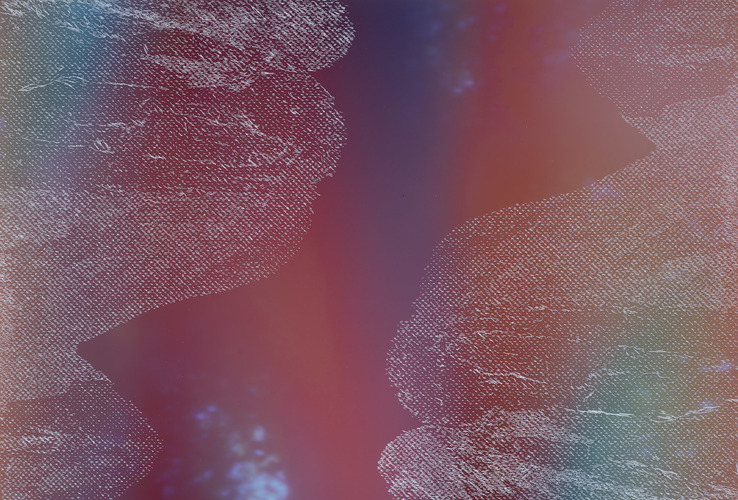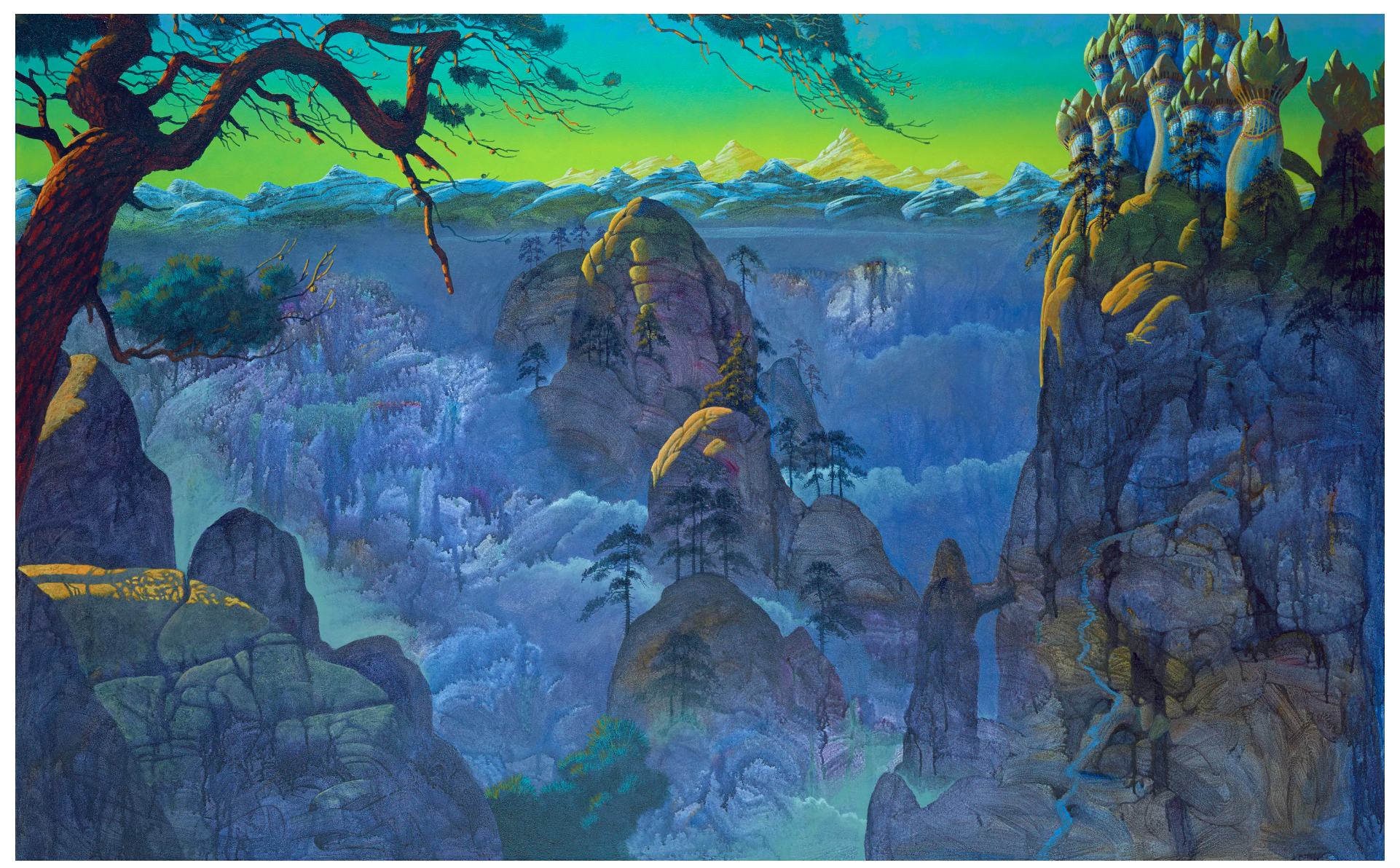Christopher Russell “The Explorers”






Russell’s process-intensive works begin with photographing scenes from nature that he intentionally obscures with sheer fabrics, effectively destroying what would otherwise serve as a documentative image. Into these hazy, abstracted fields Russell laboriously scratches intricate designs into the emulsion of the printed image, adding paint to some areas. The result is multilayered, dreamlike works that come in and out of focus as the eye negotiates the underlying image and textural patterning of meticulously etched designs.
Before advances in digital technology made photography ubiquitous in modern life, pioneers like Carleton Watkins documented the American West with the analog equipment of the time. Russell describes Watkins as operating, “at the beginning of photography, when the medium commanded trust and certainty, a privilege the medium no longer enjoys.” The Explorers considers the technological lineage of science and superstition, drawing parallels to early cartographers whose hand-drawn maps once served as scientific translation of the natural world, to Watkins whose images of the Columbia River Gorge piqued curiosities and intellects with the weight of fact, to today, where the abundance of digital manipulation has largely removed the preternatural aura photography once embodied.
Russell’s interpretations of Watkins’s historic images incorporate facets of photography, drawing, and painting to reintroduce imagination into the equation. Though far flung from the Master photographers of the 19th century, Christopher Russell recaptures the sense of magnetism that has largely lost-out to decades of technological dominance. Russell leaves us with the question, “How do we satisfy a nagging curiosity that can’t be settled with search results?”
Words and images via David B. Smith Gallery



